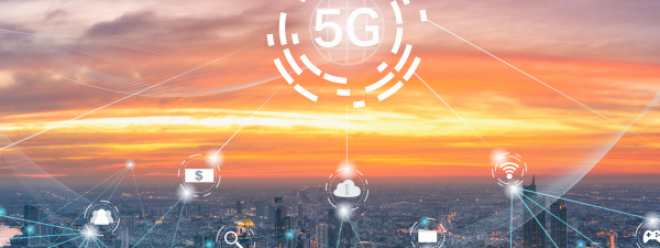Can 5G deal with safety issues in the workplace?
2021.06.11

With the promotion of 5G networks on a global scale, the unlimited potential of 5G networks to accelerate their applications in the workplace will certainly attract more attention. However, are there any real concerns about 5G security, especially in the early stages of 5G implementation throughout the enterprise?
As one of the most revolutionary technologies in the digital age, 5G technology has shown great potential. As suppliers begin to deploy 5G networks globally, the global 5G infrastructure market is expected to exceed US$42 billion by 2025.

From ultra-high-definition streaming media to enhanced sensor detection by utility companies, 5G may have a huge impact in fields such as entertainment, energy, communications, and manufacturing. Although the true transformative potential of 5G is uncertain-once cellular technology becomes entrenched, the most creative and innovative applications will emerge-but the combination of ultra-high network speeds and ultra-mobility may fundamentally change the way we work.
Cloud security expert and CEO of iboss Paul Martini told TechHQ: “The amazing increase in bandwidth supported by 5G technology will have a huge impact on all cloud-related things, allowing users and devices to use almost any cloud application at any location.” However, 5G The rise of will also "subvert the traditional office scope."
"Before the advent of 5G and cloud technology, the office area was the building where users worked. Now, with 5G technology, the office surroundings will become users and the equipment itself." Martini told us, although this can be provided in the way enterprises and workers operate More freedom and flexibility, but the increase in mobility will also bring unique challenges to the organization.
In the 5G era, users are no longer limited to wi-fi networks. The decentralization of the network requires administrators to re-evaluate how users access organizational files and perform business tasks. Martini said: "For example, some organizations used to use safety equipment to build castles and moats around their buildings." "The problem is that people no longer work in the castle."
Martini believes that the rise of 5G will eventually mark the end of network boundaries-which will have an impact on how companies must build themselves to resist security threats.
Nowadays, employees can obtain more information at any time than ever before, which means that traditional network security measures are no longer effective. The increase in bandwidth provided by 5G and the wider access of ultra-high-speed connections can provide attackers with a larger surface area and be able to carry out attacks more effectively-as a result, users and devices outside the office will be more accessible than ever before. More vulnerable to attack.
According to data from Information Risk Management (InformationRiskManagement), a British cybersecurity organization, 83% of cybersecurity leaders in various industries claim to be "distressed" by the increased risk of 5G connections. Then, organizations must consider security challenges in a more comprehensive way. As Martini said, the concept of "building a moat around a castle" is not a sufficient model-on the contrary, 5G connections will require companies to double the boundaries of external users and equipment offices. .
Martini said: "This is why it is important to change the design model from a security strategy designed for fixed buildings (such as network security equipment) to a network security strategy that is used in the cloud and where users go." At the end of 2019, The EU member states have released a joint risk assessment report on 5G technology, advocating new methods to deal with the multidimensional security challenges of the new generation of networks.
5G strategists and industry insiders recommend the development of end-to-end security in the network to address the stated security concerns. Taking network slicing as an example, each "service category" has its own different network requirements. By doing so, the "service category" will have its own virtual network slice, which specifies the transmission of data through high bandwidth and ultra-low latency without affecting other services.
As we move towards the commercial future of 5G interconnection, the most forward-looking companies are expected to get unfettered applications. However, every investment in the potential of 5G must be matched with an investment in equally complex and comprehensive security.
【Editor's Choice】